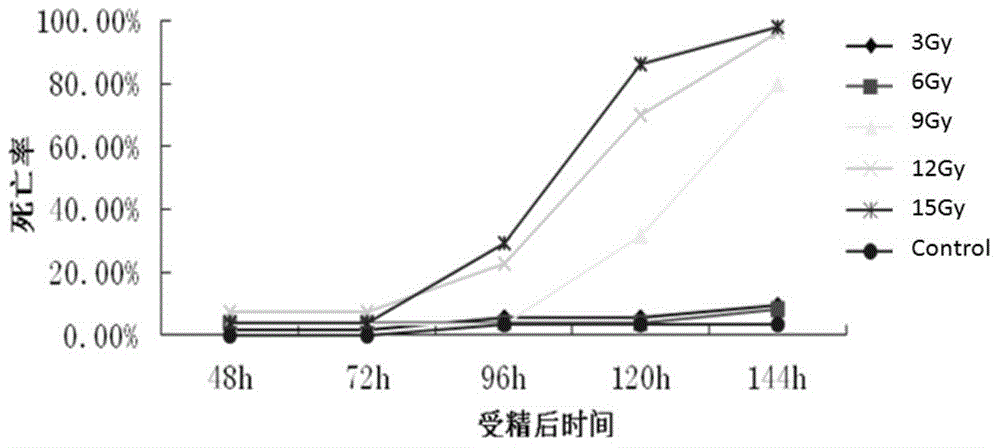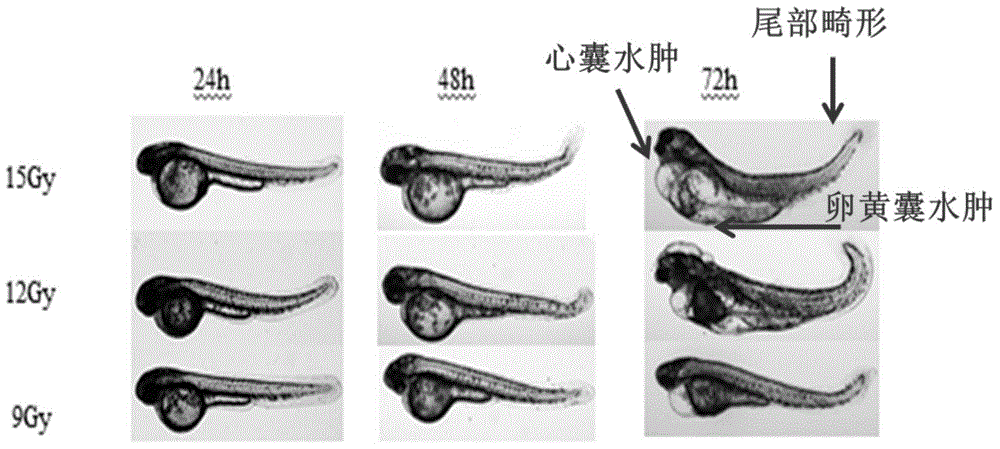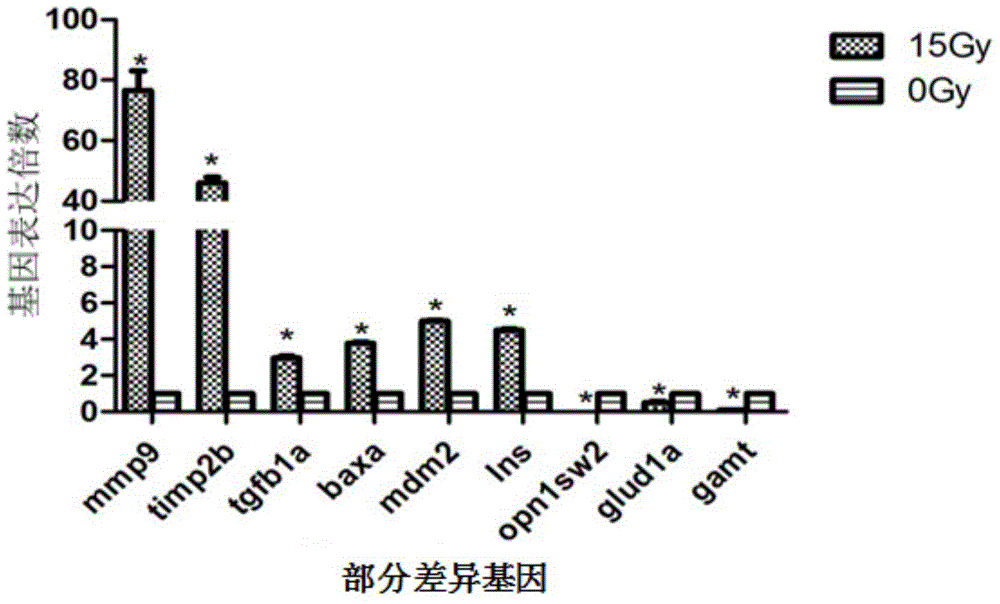Application of matrix metallo-proteinase inhibitor in resisting nuclear radiation
A matrix metal and protease technology, applied in the field of anti-nuclear radiation, can solve the problems of many side effects and high toxicity
- Summary
- Abstract
- Description
- Claims
- Application Information
AI Technical Summary
Problems solved by technology
Method used
Image
Examples
Embodiment 1
[0048] Example 1. The effect of heavy ion radiation on the development of zebrafish embryos
[0049] The inventor conducted experimental research with heavy ions (carbon particles) commonly used in nuclear radiation experiments, irradiated zebrafish embryos with different doses of heavy ions, and then observed them to calculate the mortality rate, deformity rate and deformity phenotype. The specific experiment is carried out according to the following steps: fish are paired in the evening of the first two days of the experiment, and the separator is removed in the morning of the second day, and the male and female fish rear-end and are fertilized. Collect the same batch of fertilized eggs. Wash the fertilized eggs of zebrafish 3-4 times with E3 culture medium to wash away the excrement, food and other impurities of the zebrafish, and then place the fertilized eggs in a constant temperature incubator at 28°C for incubation. During the incubation process, find out in time to re...
Embodiment 2
[0050] Example 2 Discovery of Heavy Ion Radiation Susceptibility Genes
[0051] Put the zebrafish embryos from the same parent 24h after fertilization into a 6-well plate, put 20-30 embryos in each well, divide them into 12 wells, and divide them into 9 radiation groups and 3 control groups (non-irradiation group) The irradiation group was irradiated with 9Gy, 12Gy, 15Gy of 12C6+ protons, and continued to culture and hatch. After 7 days of irradiation, the zebrafish in the irradiation group and the normal control group were blotted dry and placed in cryopreservation tubes and frozen in liquid nitrogen. , for subsequent gene chip detection.
[0052] Chip synthesis, signal acquisition, quality control, and analysis were all performed by Beijing National Engineering Research Center of Boao Biological Co., Ltd. All the data analysis adopts Boao company's MAS3.0 system. According to the analysis results of the gene chip, genes with large differences were found, and primers were d...
Embodiment 3
[0059] The radiation protection effect of embodiment 3 matrix metalloproteinase inhibitors
[0060] Zebrafish embryos were given matrix metalloproteinase inhibitors and then subjected to heavy ion radiation, and the mortality, hatchability and deformity phenotypes were calculated to obtain the radiation resistance effect. The most representative drug of matrix metalloproteinase inhibitors is ilomastat (Ilomastat), and the inventor conducted a series of studies using him as an experimental drug. Specific experimental steps: fish were bred 2 nights before the heavy ion irradiation test, and the next morning, the board was drawn, and the male and female fish were chased and fertilized. Zebrafish fertilized eggs were collected, washed, and placed in an incubator at 28°C for incubation. Injection was performed after 24hpf. Each embryo was injected with 0.5mg / ml matrix metalloproteinase inhibitor solution 10nl, and normal saline was injected as the control group. To determine the ...
PUM
 Login to View More
Login to View More Abstract
Description
Claims
Application Information
 Login to View More
Login to View More - R&D
- Intellectual Property
- Life Sciences
- Materials
- Tech Scout
- Unparalleled Data Quality
- Higher Quality Content
- 60% Fewer Hallucinations
Browse by: Latest US Patents, China's latest patents, Technical Efficacy Thesaurus, Application Domain, Technology Topic, Popular Technical Reports.
© 2025 PatSnap. All rights reserved.Legal|Privacy policy|Modern Slavery Act Transparency Statement|Sitemap|About US| Contact US: help@patsnap.com



